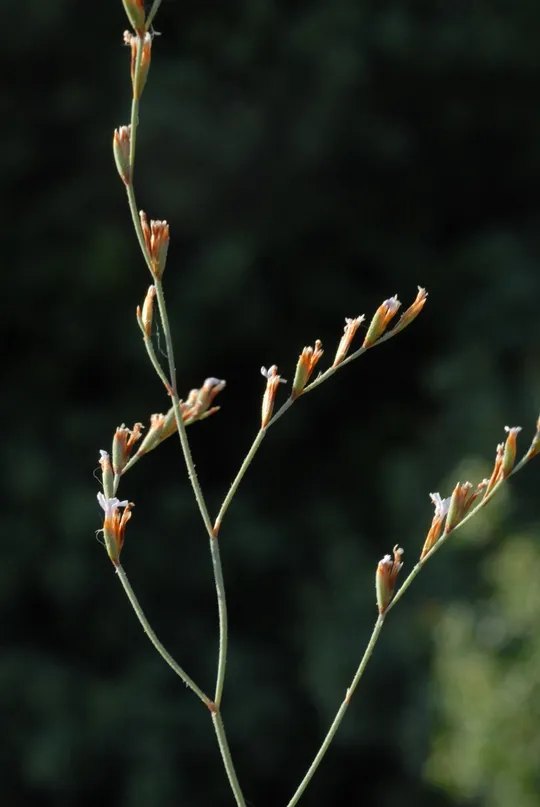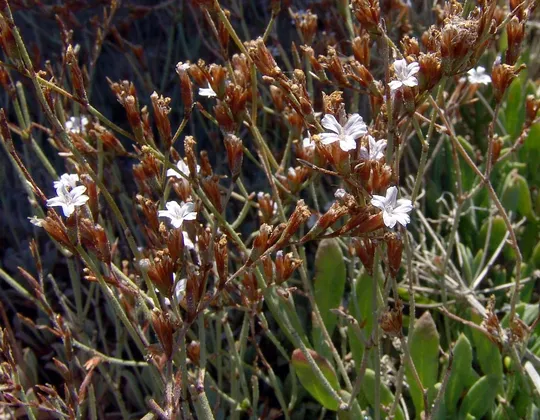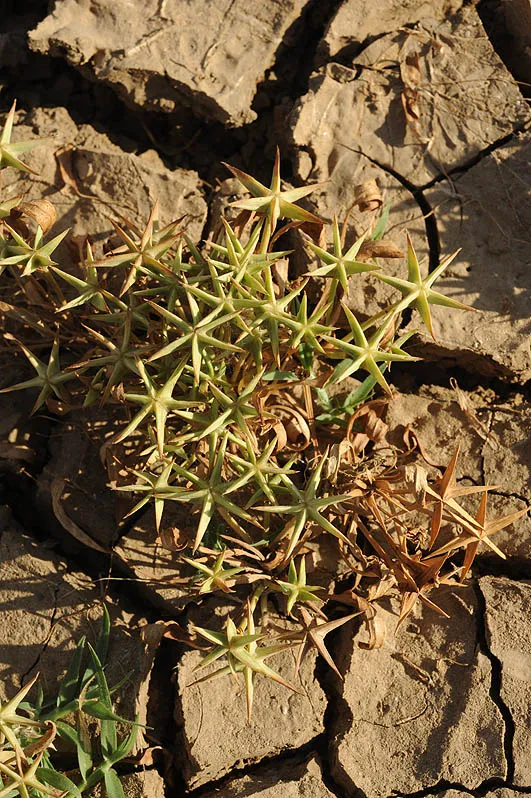galilee Sea-lavender
Limonium galilaeum


Limonium galilaeum
is found in only two regions: the Acre Valley and Carmel Coast, at 14
documented sites, and according to estimates there are 16 sites. In the Acre
Valley it grows on all the beaches from Rosh HaNikra to Nahariya and south of Nahariya
from Shave Tsion to north of Acre. On the Carmel Coast, it is found in the Dor-HaBonim
area. The Flora Palaestina notes the presence of L.
galilaeum in the Sharon as uncertain, and there are
indeed no herbarium sheets or observations to support this claim.
Calcareous sandstone and limestone rocks on
the coastal spray zone.
The genus Limonium has about 350
species found throughout the world, especially in salt marshes, beaches and in
deserts. There are 87 species In Europe and 35 species in the Middle East. The Mediterranean
coast, particularly the Iberian Peninsula is the richest global diversity
center of the genus and of the tribe to which Limonium belongs in the family
Plumbaginaceae. The closest genera to it are Armeria
and Acantholimon. The unique feature of the species in this tribe is the
lasting colored calyx that remains on the plant long after the flowers fall (hence,
the popular name of the genus "everlasting"). The calyx is used as a
supplemental advertisement of the inflorescence and is part of the dispersal unit.
Occasionally its color is stronger than that of the corolla when in bloom. This
feature is not prominent in L. galilaeum and in L. virgatum. Six species grow In Israel: L.
lobatum (an annual) and L. pruinosum – in the desert, L.
narbonense – in salt marshes and on the coast, L.
sinuatum – on beaches and calcareous sandstone hills, L.
virgatum and L. galilaeum – on the coastal spray zone.
Many species are cultivated as ornamental
flowers (including L.sinuatum and L. narbonense) that are used for gardening and as cut flowers.
Until recently, the Akhziv-Rosh HaNikra coastal
populations were identified as L. graecum, a species that grows in the Mediterranean islands
including Cyprus and on the northern Mediterranean coast including Turkey,
Syria and Lebanon. Domina et al. (2006) identified the population of northern
Israel as a separate and endemic species – L. galilaeum. Its close relatives are L. graecum and L.
sieberi. L. galilaeum
differs from L. graecum (to which it belonged to previously) by several prominent
diagnostic features: L. galilaeum has numerous flowerless stems, green leaves, its spikelets are sparse, its dispersal
unit is a single flower and its abcission tissue is above the pedicel. L. graecum on the other hand, has few
sterile stems, its leaves are tinged blue and its dispersal unit is an entire
spikelet with a conical pedicel that breaks of from the plant below the
spikelet pedicel. Whereas in Israel the population is considered an endemic
species, it is still unclear whether the southern Lebanon population belongs to L. galilaeum or if it has an intermediate status.
·
The number of regions and the number of Limonium galilaeum sites has been stable for decades, although there may
have been previous populations that disappeared from areas in Nahariya and Acre
that are now developed or built-up.
·
It usually appears, particularly in the Rosh HaNikra-Nahariya
coastal section, in large populations of hundreds to thousands of plants.
·
Coastal development activities could endanger L. galilaeum populations.
·
L. galilaeum is protected by law. Some of its sites are protected in
the Rosh HaNikra and Dor-HaBonim coastal nature reserves.
·
The plant is unique to Israel and its conservation
status in Israel is equivalent to its global conservation status.
Development
activities that could harm existing populations on the Rosh HaNikra-Acre and
Dor HaBonim beach sections should be avoided. The coastal stretch from Shave
Tsion to Bustan HaGalil should also be declared a nature reserve.
L. galilaeum
is endemic to Israel. It probably also grows on the southern coast of Lebanon.
Limonium galilaeum is a rare perennial herbaceous
species, endemic to Israel and restricted to the spray zone in the Acre Valley
and Carmel coasts. Its status as an endangered species is a reflection of its
rarity and uniqueness to Israel as well as of the great sensitivity of coastal
habitats to development.
עינב, ר. 1983. תפוצת מיני העדעד בחופי ישראל. רתם 6: 32-41.
Domina, G., Danin, A. & Raimondo, F. M. 2006: A new species of Limonium (Plumbaginaceae) from Israel. — Fl. Medit 16: 133-138.
Current Occupancy Map
| 1000 squre meter pixel | 5000 squre meter pixel | 10000 squre meter pixel | |
|---|---|---|---|
| number of observations | 0 | 0 | 0 |
| in total pixels | 0 | 0 | 0 |
| Family | Plumbaginaceae |
| Classification | On the endangered species list |
| Ecosystem | Coastal Mediterranean |
| Chorotype | Eastern Mediterranean |
| Conservation Site | Coastal Section from Rosh HaNikra to Akhziv |
| Rarity |
1
3
6
|
|---|---|
| Vulnerability |
0
2
4
|
| Attractiveness |
0
0
4
|
| Endemism |
0
4
4
|
| Red number |
1
4.7
10
|
| Peripherality | 0 |
| IUCN category | DD EW EX LC CR EN VU NT |
| Threat Definition according to the red book | Endangered |
 Based on:
Based on:






